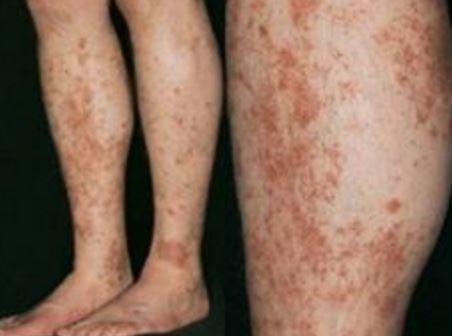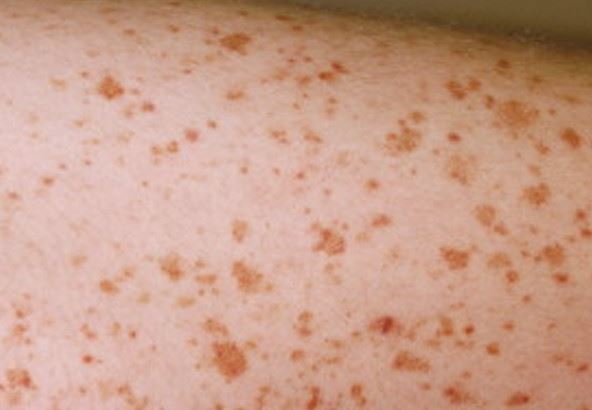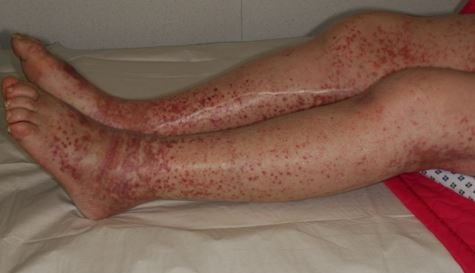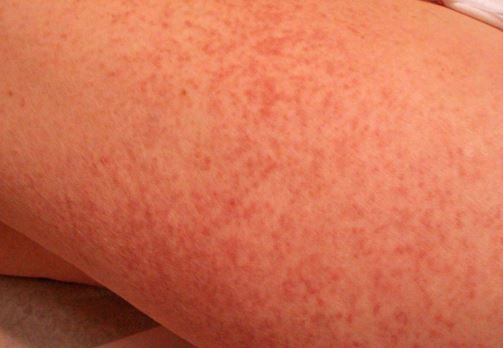Capillaritis
What is capillaritis?
Capillaritis is a medical term for a skin disorder that is characterized by extravasation of red blood cells (erythrocytes) that causes reddish brown to purplish patches that appears in the skin called petechiae. Capillaritis is also known as pigmented purpura. This is not a life treating condition but to a person with capillaritis, it could decrease self esteem due to its appearance.

Capillary is the smallest blood vessels that connect arterioles with venules and forming networks all through the body. It has a main important function that permits nutrients (erythrocytes) and waste products to pass through it. For an unknown cause, this blood vessel become inflamed and could rupture.
Symptoms
Capillaritis has different types with variation of symptoms, but its most common distinctive symptom is the discoloration of the skin. The skin discoloration may vary to the tone of skin, if a dark skinned person who is having pigmented purpura, it could appear as red to brown in color or pepper like petechiae. A person having lighter tone of skin the patches may appear as red in color or cayenne pepper petechiae.
There are many descriptive types of capillaritis with variance symptom and most of it is named after by the dermatologist who discovered and described them. Here are the following type and its symptoms:
- Schamberg disease is also called as progressive pigmented purpura. It is a persistent discoloration of the skin that mostly affects the legs and has no symptoms. Patches are unevenly spread and it is brown to orange in color with cayenne pepper spots on their edge.
- Itching purpura it has similar appearance to Schamberg disease, but it is itchy and more widespread.
- Gougerot-Blum, less common form of capillaritis and is also called as pigmented purpuric lichenoid dermatosis. It commonly affects male age 40-60, present of lichenoid papules that is thick and itchy.
- Majocchi’s purpura, also known as purpura annularis telangiectodes, because of the lesion are made up of telangiectases and haemosiderin, and it appears purple, yellow to brown color patch and mostly affects children.
- Lichen aureus is a unilateral yellow to brown color patch with linear arrangement often spread over the surface of varicose vein.
Most of the pigmented purpura appear in the legs, but can also be seen in the upper extremities, anterior and posterior trunk of the body. Some patches can be itchy, burning, inflamed, widespread, blanching, unilateral and asymptomatic. Symptoms usually vanish a few days to a week.
Causes
The etiology of capillaritis is still idiopatic, but for some reason it could happen due to capillaries that become inflamed and cause the capillary wall to rupture; leakage of red blood cells (erythrocytes) then occurs to the superficial areas of the body like the skin. Here are subsequent factors that could contribute to the occurrence of capillaritis:
- Allergic reactions to certain food, materials (rubber or latex), medications and even to the environment
- Work that needs prolong standing like nurses are also at risk of pigment purpura
- Excessive and vigorous exercise on a warm weather
- Viral infection
- Use of medication such as NSAIDs and aspirin
Treatment
Treating Capillaritis wouldn’t be that essential because it will eventually vanish a few days to a week on its own. For cases of itchiness, mid-potencial topical steroids cream will help relieve it. If there’s suspicion that the medication is the origin of capillaritis, stop it immediately and observe if capillaritis improves.
In presence of allergic reactions, taking prescribed antihistamine and steroid will lessen the extent of capillaritis. To those individuals whose work needs a prolonged standing; elevating the legs after work for 30 minutes or a compression stocking could be a big help. It should be worn in bed before standing.
Maintaining a good health and avoiding the risk factors that contribute to the occurrence of capillaritis will surely prevent it. It is still important to consult a dermatologist because there are other severe disease conditions that appear similar to capillaritis or pigmented purpura, like Poikilodermatous and Thrombocytopenia where it shows a pigmented purpura at an early stage.
Conclusion
It appears that capillaritis or pigmented purpura is a minor and chronic disorder that doesn’t necessarily need a treatment for it will vanish on its own. But still we shouldn’t be too certain because there are other serious and severe disease conditions that manifest similar symptoms like capillaritis or pigmented purpura.
It’s a smart decision to consult first the dermatologist so it will be identified. It’s sad to say but capillaritis or pigmented purpura has still an unknown cause and no known cure.
Pictures




References
Web Sources:
- http://www.pcds.org.uk/clinical-guidance/capillaritis
- http://dermnetnz.org/vascular/capillaritis.html
- http://healthool.com/capillaritis/
Books:
- G. V. Ball, & S. L. Bridges ,(2008), Vasculitis
- M. G. Lebwohl, W. R. Heymann & J. B-Jones. (2013). Treatment of Skin Disease: Comprehensive Therapeutic Strategies
- Fry L. (2000) ,An Atlas of Dermatology
